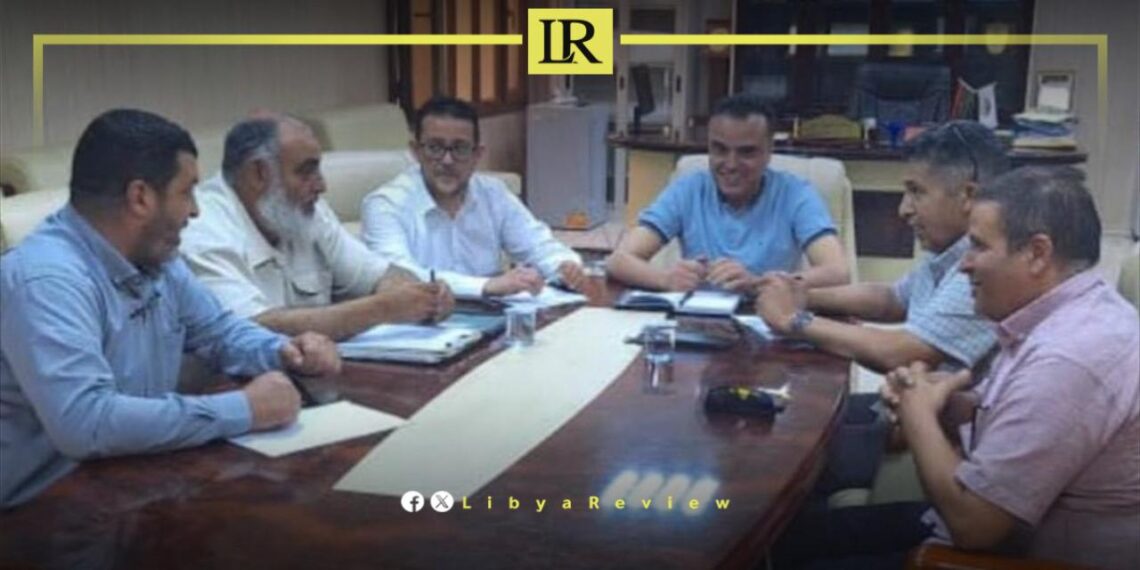Mohamed Faraj Mohamed, Head of the Libyan Antiquities Authority, met with the Mayor of Gharyan, Nasser Braine, to discuss the establishment of a museum in the city to showcase its cultural heritage and archaeological artifacts.
The meeting, held at the municipality’s headquarters, covered various issues related to cultural heritage preservation, including ways to protect the city’s historical landmarks and old buildings.
The discussion also touched on the idea of creating a museum in Gharyan to exhibit the city’s rich cultural heritage through close cooperation with all institutions concerned with cultural heritage.
During the discussion, it was emphasised that the recommendations resulting from the meeting would be put into action by scheduling and implementing them in phases.
Last week, an ordinary villa, in the heart of Tripoli, was transformed into a vibrant museum celebrating the life and work of the late Libyan artist Ali Gana. This unique museum, known as Bayt Ali Gana (“Ali Gana’s House” in Arabic), is the first and only modern art museum in Libya, offering a beacon of hope and culture in a country still grappling with divisions and conflict.
Hadia Gana, the youngest daughter of Ali Gana, spearheaded the decade-long effort to convert her father’s classic Tripolitian villa into a cultural haven. Despite ongoing turmoil following the fall of Muammar Gaddafi in 2011, Hadia believed in the immense value of art, even in a nation where it often comes last.
The museum showcases an extensive collection of Ali Gana’s paintings, sculptures, and sketches. It also hosts temporary exhibitions, seminars, and themed workshops, creating a dynamic space for artistic expression and education.
A notable feature of the museum is an old shipping container repurposed as an artist residency, aimed at attracting curators and museologists to Libya, where such skills are scarce. This initiative underscores Hadia’s commitment to making art accessible and promoting cultural exchange.
Under Gaddafi’s regime, Libyan artists faced censorship and were unable to express themselves politically. Hadia, a ceramic artist herself, emphasizes that art “must not have barriers.” The museum stands as a testament to artistic freedom and creativity in Libya.
Despite the signs of conflict visible on the villa—such as a bullet-riddled road sign at the gate and mortar shells in the garden—the museum remains a serene cultural sanctuary. Visitors are welcomed with cold drinks or Italian espressos, reminiscent of Cafe Said, once owned by Ali Gana’s father in Tripoli’s old medina.
The idea for the museum emerged during the 2011 unrest, as Hadia feared the loss of her father’s works if a rocket hit the house. The Gana family faced numerous challenges, including sporadic fighting, water and electricity cuts, and the COVID-19 pandemic, but remained steadfast in their mission. They avoided state funding and investors to maintain the museum’s independence.
Gradually, the villa evolved into a cultural center reflecting Ali Gana’s dedication to “teach and educate through art.” The museum is not a mausoleum but a lively hub of creativity and education, celebrating traditional crafts and trades that have largely disappeared since Gaddafi’s 1969 coup, which banned private enterprise and criminalized many crafts.
Ali Gana’s oldest son, Mehdi, who now resides in the Netherlands, highlighted his father’s mission to “build archives to link Libya’s past to a possible future.” The family’s commitment to preserving and sharing knowledge is a core principle of the museum, driven by matriarch Janine Rabiau-Gana, 84.


